How to fix low open-circuit voltage on a Miller Big Blue Air Pak 600?
- DdaniellehooverAug 3, 2025
To address low open-circuit voltage on your Miller Welding System, verify the position of the Process/Contactor switch.
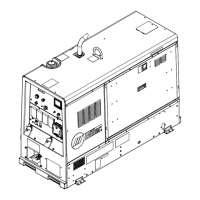
How to fix low open-circuit voltage on a Miller Big Blue Air Pak 600?
To address low open-circuit voltage on your Miller Welding System, verify the position of the Process/Contactor switch.
What to do if there is no remote amperage or voltage control on a Miller Big Blue Air Pak 600?
To restore remote fine amperage or voltage control on your Miller Welding System, check and secure the connections to the Remote 14 receptacle.
What to do if there is no weld output on my Miller Welding System but the generator power is okay?
If your Miller Welding System isn't providing any weld output but the generator power is fine at the AC receptacles, there are several things to check. First, make sure the Process/Contactor switch is in an Electrode Hot position, or in a Remote On/Off Required position and the remote contactor is connected to the Remote 14 receptacle. Next, try resetting supplementary protectors CB3 and CB9. Also, check the connections to the Remote 14 receptacle to ensure they are secure. If the VRD switch S5 is On, inspect the voltage feedback wires at the output terminals. Finally, inspect fuse F2, and replace it if it's open.
Why is the weld output erratic on my Miller Welding System?
If you're experiencing erratic weld output with your Miller Welding System, start by checking and tightening all connections, both inside and outside the unit. Ensure that your connection to the workpiece is clean and tight. Use dry, properly stored electrodes. Remove any excessive coils from your weld cables.
What to do if my Miller Welding System has no weld or generator output?
If your Miller Welding System has no weld output or generator power output at the AC receptacles, try these steps. First, disconnect the equipment from the generator power receptacles during start-up. Then, reset supplementary protector CB4. Check fuses F1 and F2, and replace them if they are open.
How to decrease high weld output on a Miller Big Blue Air Pak 600?
If your Miller Welding System is producing high weld output, first check the position of the Voltage/Amperage Adjust control.
Why is the weld output low on my Miller Big Blue Air Pak 600 Welding System?
If your Miller Welding System has low weld output, start by checking the position of the Voltage/Amperage Adjust control. Also, check fuses F1 and F2, and replace them if open. Try placing the VRD switch S5 in the Off position and attempt to weld.
| Brand | Miller |
|---|---|
| Model | Big Blue Air Pak 600 |
| Category | Welding System |
| Language | English |
Explains various safety symbols and their meanings used throughout the manual.
Details hazards associated with arc welding, including electric shock.
Covers battery explosion, fuel fire, engine heat, and acid hazards.
Critical warning against using generators indoors due to carbon monoxide.
Covers fire, falling equipment, overheating, sparks, and moving parts symbols.
Information about Electromagnetic Fields (EMF) and advice for medical implants.
Explains additional safety symbols found on CE products.
Defines symbols for welding processes, components, and controls.
Location and importance of serial number and rating labels for product identification.
Technical specs for welding output, generator power, and engine.
Specs for air compressor performance and environmental operating conditions.
Physical dimensions, weight, and operating angle limits.
Information on duty cycle limits and preventing overheating.
Shows voltage and amperage output capabilities for different welding modes.
Graphs illustrating generator power output characteristics.
Graph showing typical fuel usage under various load conditions.
Steps and considerations for installing the welder/generator unit on a vehicle.
Procedures for properly grounding the generator to a vehicle frame.
Instructions for installing the exhaust pipe correctly.
Step-by-step guide for connecting the unit's battery.
How to operate the battery disconnect switch for safety.
Daily checks required before starting the engine for optimal operation.
Proper procedure for connecting weld output terminals for safe operation.
Guide for choosing appropriate weld cable sizes based on length and current.
Location and identification of weld output terminals on the unit.
Details on connecting remote control devices to the unit.
Instructions for connecting the air compressor to the unit.
Overview of the front panel controls with reference to their descriptions.
Detailed explanation of each front panel control and its function.
Step-by-step guide for starting the engine safely.
How to select welding processes using the switch.
Lists typical applications for different switch settings.
Explains how to use and adjust the arc control feature for welding.
Information on the VRD switch function and its effect on voltage.
How to initiate welding using the scratch start method.
Procedure for Lift-Arc TIG welding with Auto-Stop feature.
How to use remote controls for voltage and amperage adjustment.
Instructions for operating the engine block heater to maintain coolant temperature.
Information on operating the optional air dryer system.
Overview of auxiliary power receptacles and their ratings.
Details on GFCI receptacles, including testing and resetting procedures.
Location and explanation of the maintenance label for service intervals.
Instructions for cleaning the exterior of the unit to prevent rust.
Schedule and procedures for routine maintenance tasks.
How to check and replace generator brushes for optimal performance.
Step-by-step guide for replacing the unit's battery.
Instructions for cleaning or replacing the air cleaner element.
Guidelines for maintaining the unit's battery for optimal performance.
Information on adjusting engine speed and potential warranty implications.
Recommended engine oil types and viscosity chart.
Procedures for servicing fuel and lubrication systems.
Explanation of overload protection devices and their functions.
How to use meter displays for diagnosing faults and errors.
Procedure for removing the air dryer for access to the battery.
Details on the air compressor maintenance schedule and fluid requirements.
Schedule for routine maintenance tasks for the air compressor.
Instructions for servicing the air compressor's air cleaner.
Information on the compressor overload protection circuit breaker.
Procedures for changing compressor oil and filters.
How to adjust the air compressor's operating pressure.
Guide for diagnosing and resolving welding-related issues.
Solutions for problems with standard and three-phase generator power output.
Common engine-related problems and their remedies.
Common issues and solutions for the air compressor system.
List of recommended spare parts for the equipment.
Electrical schematic for the welder/generator system.
Second part of the electrical schematic.
Overview of the engine information display layout and controls.
Explains the function of the display's navigation buttons.
Describes RPM signal failed and service reminder displays.
Details the default 6-parameter engine information display.
How to switch from the 6-Up to a 1-Up display.
Explains various single-parameter displays for engine data.
Shows single-parameter displays for the air compressor status.
Explains fuel level warnings and indicators on the display.
How engine warnings and shutdowns are displayed and interpreted.
Lists common engine faults and their descriptions for operator diagnosis.
Details the engine diagnostic display and fault codes.
How to access the main menu using a password.
Steps to reset service reminders for oil changes.
How to adjust display settings like brightness and units.
How to view and modify service reminders for the engine and compressor.
Accessing OEM, version, stored codes, and language settings.
Explanation of wetstacking and its prevention.
Procedures for engine run-in using load banks or resistance grids.
Table showing air flow rates for different orifice sizes.
Table of air consumption for various pneumatic tools.
Guidance on selecting appropriate electrical equipment for use.
Procedures for grounding the generator to a vehicle frame.
Guidelines for grounding the generator to building electrical systems.
Methods for calculating power needs for various equipment.
Power requirements for various industrial motors.
Power requirements for farm/home equipment.
Power requirements for contractor equipment.
Calculating starting power for single-phase induction motors.
Guidance on generator power capacity and load management.
How to connect the generator for standby power supply.
How to select extension cords based on load and length for minimal voltage drop.
Details of Miller's limited warranty coverage, periods, and exclusions.
Section for recording owner and purchase information for future reference.
Information on obtaining service and locating distributors or agencies.
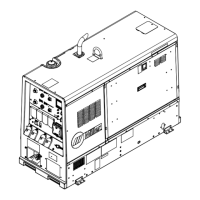
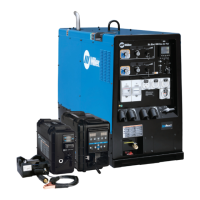
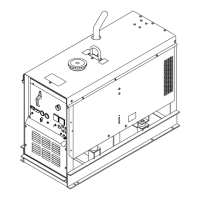
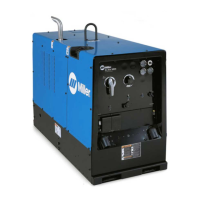
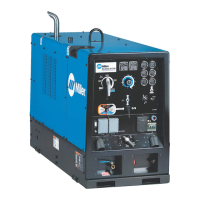
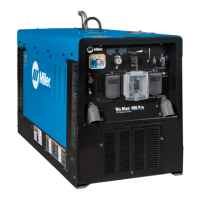
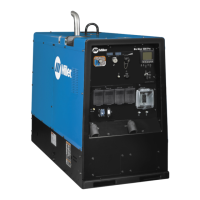
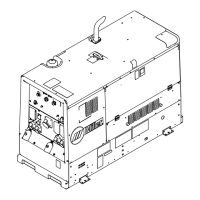
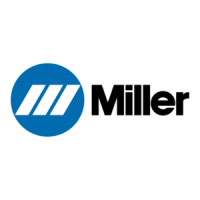
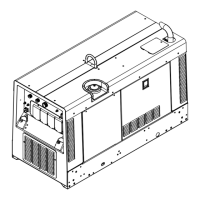
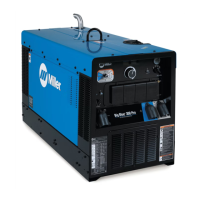
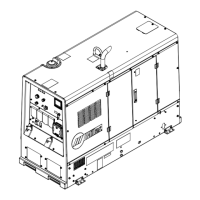
